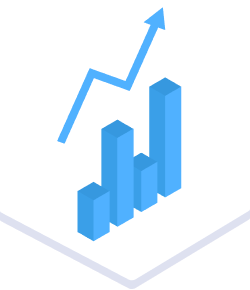PWA Statistics
The numbers don’t lie! When looking at the industry today, many companies have invested in PWAs after seeing how they can assist in revolutionizing how their businesses are done on the internet then have had excellent outcomes. That’s true to not only well-known profiles such as Twitter, Alibaba, Starbucks, or Forbes but also to smaller-scale enterprises such as Uber or Tinder. As we have discussed so far, PWA brings tremendous benefits to its users, and the following statistics are the most visible proof.
Contents
Better Site Performance
1. Faster page load time
Even on a 2G network, Uber’s PWA can still load fast when the core content takes less than 2s to load. With the new PWA, Tinder’s load time drops nearly three times from 11.91s to just 4.69s.

Forbes also saw the same improvement in this user-centric performance indicator when its PWA needs only 2.5s to load on mobiles, compared to 6.5s of the previous site. More impressively, its PWA’s homepage can be fully loaded in merely 0.8s on mobiles, which is, as they stated, significantly faster than nearly all other sites.
2. Reduced data consumption
Of course, it goes without saying that PWAs will take up less space in the device’s storage than a native app, which is often data-hungry. As a result of being less heavy, they will consume less data.
For example, Konga – Nigeria’s largest online mall reduces data usage by 92% with their new PWA. Compared to a native app, their PWA uses 82% less data to complete the first transaction. Also, it requires 63% fewer data for initial load and 84% fewer data to complete the first transaction than the previous mobile web experience.

Another typical example should be Flipkart, India’s largest e-commerce site. Deciding to combine their website and native app into a PWA, Flipkart successfully lower the site’s data usage three times.
In fact, users will not always accept the cost of downloading a native app only to see if it provides the service they need. Mobile data is sometimes pricey and especially expensive in Equatorial Guinea ($49.67/GB) or Falkland Islands ($44.56/GB).
Improvements In Business Metrics
1. Increased organic traffic
According to statistics, the Starbucks PWA resulted in a twofold increase in daily active users. The brand also witnessed the growing trend in desktop orders at approximately the same rate as orders made via mobile browsers.

With the purpose of combining the best of their app with the broad reach of the web, AliExpress decided to develop their own PWA. The new investment resulted in a much-improved user experience. The brand’s users now visit twice as many pages per session, and the average amount of time spent per session has climbed by 74% across all browsers.
2. Better engagement
Since 2017, Twitter Lite PWA became the default mobile web experience for all users globally and contributed significantly to the social platform’s better engagement. Twitter has seen 250,000 unique daily users launch Twitter Lite from the home screen four times per day on average after adopting the “Add to Homescreen” prompt, asking users to add this site to their home screens. Implementing the push notifications function is delivering over 10M direct messages to users’ devices a day.

The new site’s enhanced download speeds and user-interface changes contributed to Lancôme‘s better engagement rate. Besides, Lancôme used push notifications as a valuable tool to re-engage their customers and got over 18,000 shoppers registered for site notifications since the site’s introduction in October 2016.
3. Higher conversion rates
Unreliable networks can negatively affect user experiences, which are often dependent on an active data connection. Even in countries with robust 4G, users are likely to lose connection in elevators or move underground, resulting in broken sessions, failed searches, and transactions. This can lead to many user dissatisfactions, and dissatisfied consumers are the hardest to convert into loyal customers.
Surprisingly, internal Google statistics show that PWA banners convert 5–6 times more frequently than native app banners for the same amount of prompting. When Trivago began seeking strategies to keep ahead of this new wave of disruption, they discovered PWA technology, which did not let them down. More than half a million users have added the Trivago site to their home screen that boosting their engagement by 150%, from an average of just 0.8 repeat visits on the old mobile site. This has resulted in higher conversion rates, with a 97% increase in click outs to hotel offers for PWA users.

Another PWA player from India is BookMyShow – the largest ticketing firm in this country. The company’s assistant general manager stated that they noticed an exponential boost in mobile conversion rates after launching PWA. Moreover, they are able to engage with more individuals on mobile, and mobile users account for the bulk of their entire audience. Statistics show that PWA helps increase the company’s conversions by more than 80% through changes in page load time, data consumption, etc.
4. Reduced bounce rate
Maybe you have heard about George, which is a part of ASDA Walmart. George, currently considered as a leading UK clothing brand, recently upgraded their site to a PWA. With this technology, the brand witnessed a decrease in the site’s bounce rate, twice lower than on the original site.

Together with an improvement in user engagement, Twitter Lite’s PWA also created a 20% decrease in the site’s bounce rate. Seeing those metrics, we know that users are more content with the site integrated with PWA technology than traditional ones.
Are You Impressed With These PWA Statistics?
As you can see, PWA users can derive many benefits from them. Some PWAs assist businesses in enhancing conversions and customer engagement, while others help businesses personalize the user experience and reduce bounce rates. So, if you want to boost the performance of your mobile site, go for PWA.
